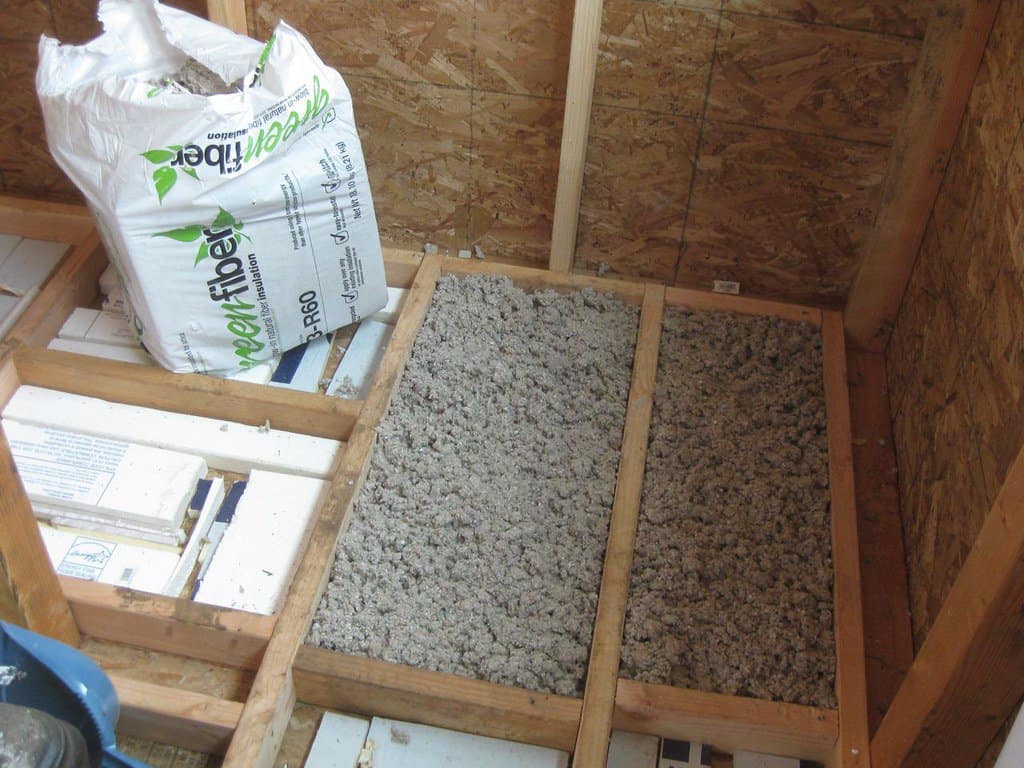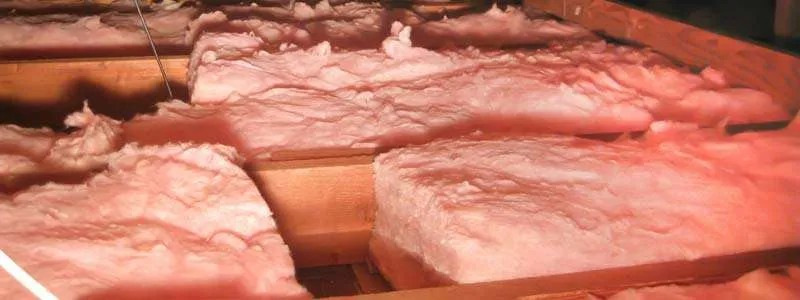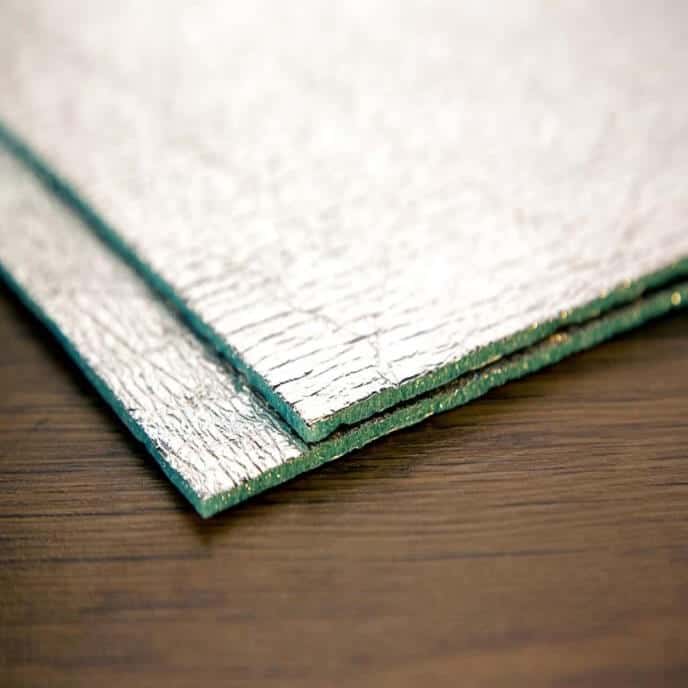Jump to:
Insulating your shed’s floor is key to transforming a chilly space into a cosy retreat. Whether you use the unit for storage or as a workspace, proper insulation is essential. In this blog, we’ll walk you through the simple yet effective steps to do so. Read on, and say goodbye to cold drafts and hello to a warm, inviting garden room!
Evaluate the Current State of Your Shed
Start by evaluating the current state of your shed to determine its insulation needs. Check for existing insulation and inspect for any gaps or areas requiring improvement. Examine the type of flooring in your shed, considering its insulation properties. Wooden floors, for instance, may require a different approach than concrete ones. Without shed insulation, the building loses heat in winter and gains warmth in the summer.
This evaluation lays the groundwork for a focused insulation plant. It ensures you tackle issues and customise the process to fit your shed’s features.
Gather Necessary Materials
Let’s explore the essentials needed to ensure a successful and effective insulation process:
- Insulation material: Choose insulation material based on your shed’s needs. Common options include: 1.) fibreglass for affordability and versatility or 2.) foam board for higher insulation value.
- Vapour barrier: Prevent moisture-related issues by adding a vapour barrier. This could be a plastic or foil sheet that goes between the insulation and flooring.
- Tools: Gather essential tools like a utility knife for cutting insulation. Prepare tape measure for precise dimensions. Don’t forget the staple gun or adhesive for securing materials in place. Having the right tools ensures a smooth and efficient insulation process.
Choose the Right Insulation Material
Selecting the proper insulation material is pivotal for effective shed floor insulation. In this section, we’ll explore options and factors to guide you in making an informed decision.
Types of insulation

There are several insulation materials suitable for shed floors. Each has its unique benefits, catering to different needs and preferences. Fibreglass is known for its affordability and versatility. It competes with foam board, offering higher insulation value. Reflective foil is another option, often made of aluminium. This material reflects radiant heat, preventing its absorption.
Factors to consider
When choosing insulation, consider factors like cost, ease of installation, and insulation performance. Fibreglass may be budget-friendly, but foam board might provide better insulation. Assess your priorities, and this discussion will help you make an informed decision.
Prepare the Shed Flooring
Before starting to insulate the floor, clear the area for a smoother process. Remove any items from the structure to provide unobstructed access to the floor. This facilitates easier movement and allows for a thorough inspection and space preparation.
Ensure your insulation lasts by beginning with a clean shed floor. Remove dust, debris, and obstacles. Address any issues like cracks before insulation for a stable shed foundation.
Install Insulation

(Image Credit: Insulation Advisor)
Measuring and cutting insulation for your shed floor is a crucial step for a precise fit. Follow these step-by-step instructions:
- Measure the floor: Use a tape measure to determine the dimensions of your garden shed flooring. Measure both length and width, accounting for any irregularities.
- Transfer measurements to insulation material: Transfer the measurements onto your chosen insulation material. Mark the dimensions clearly using a straight edge or ruler.
- Cutting the insulation: Use a sharp utility knife to cut the material along the marked lines. Ensure a straight and clean cut for a seamless fit.
- Trim for corners and obstacles: For corners or obstacles, trim the insulation accordingly. Measure and cut precisely to navigate these spaces without gaps.
Next, laying insulation in your shed involves a straightforward yet crucial process. Follow these steps to ensure effective coverage:
- Start at a corner: Begin laying insulation in a corner, aligning it with the walls. This creates a foundation for the rest of the insulation.
- Interlock pieces: If using multiple insulation pieces, interlock the edges to eliminate gaps. Ensure a tight fit to maximise insulation performance.
- Address corners and irregular shapes: Trim the insulation accordingly. Use the proper tools to cut and fit the material precisely.
- Secure in place: Use staples, adhesive, or any fastening method to secure insulation. Pay extra attention to edges and seams, preventing any movement.
By following these techniques, you’ll effectively cover your shed floor base.
Adding a Vapour Barrier

(Image Credit: Buy Insulation Online)
Adding a vapour barrier is essential for preventing moisture-related issues in your shed. Moisture can seep through the floor, leading to mould, mildew, and structural damage. A vapour barrier prevents moisture from penetrating the insulation and reaching the floor. This is particularly crucial in sheds.
Now, let’s guide you through the process of laying and securing one:
- Unroll the barrier: Do so across the insulated shed floor protection. Ensure it covers the entire surface, extending up the walls for full protection.
- Overlap seams: Particularly ideal if using multiple pieces of vapour barrier. Overlap the seams by several inches. This prevents any potential gaps where moisture could infiltrate.
- Secure edges: Use tape, adhesive, or staples to secure the edges and seams of the vapour barrier. This creates a sealed barrier, enhancing its effectiveness in preventing moisture ingress.
By following these steps, you’ll fortify your shed floor against moisture-related issues.
Finishing Touches
Sealing gaps is vital to make your shed floor insulation work better. Even tiny openings can mess with temperature control. Seal them up to keep your space well-insulated and avoid losing or gaining heat.
When reinstalling or adding a new layer of flooring over the insulated surface:
- Before laying the new flooring, make sure the insulated surface is level. This provides a stable foundation for the flooring material.
- Select a flooring material that complements your insulation. Consider options that contribute to the overall insulation performance of the shed.
- Install the flooring securely using recommended adhesives or fasteners. This enhances the insulation and ensures a durable and long-lasting floor.
Round-up
Insulating your shed floor is an easy way to make it more comfy and energy-efficient. From picking the right materials to sealing gaps, every step matters. A well-insulated shed saves on energy and offers a cosy space all year. Now, enjoy the perks of your insulated shed, giving you a comfy place for whatever you use it for.
Explore our collection of garden sheds for sale for your ideal storage solution. At Garden Buildings Direct, we provide a range of materials, including plastic sheds.
Up next on your reading list: How to Insulate a Shed










